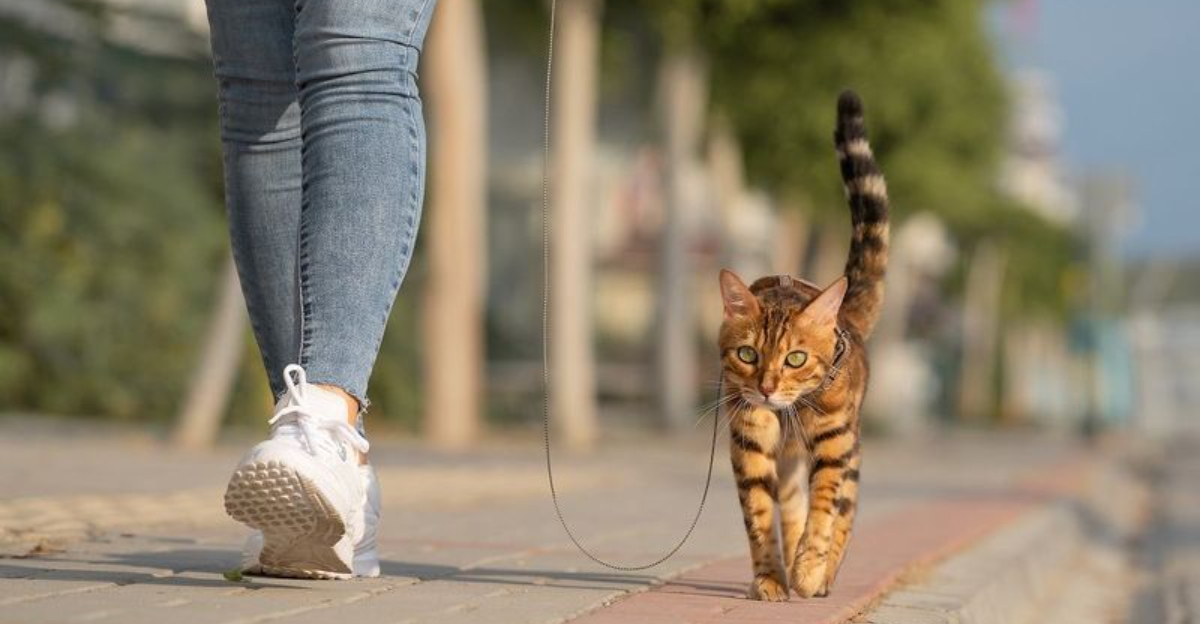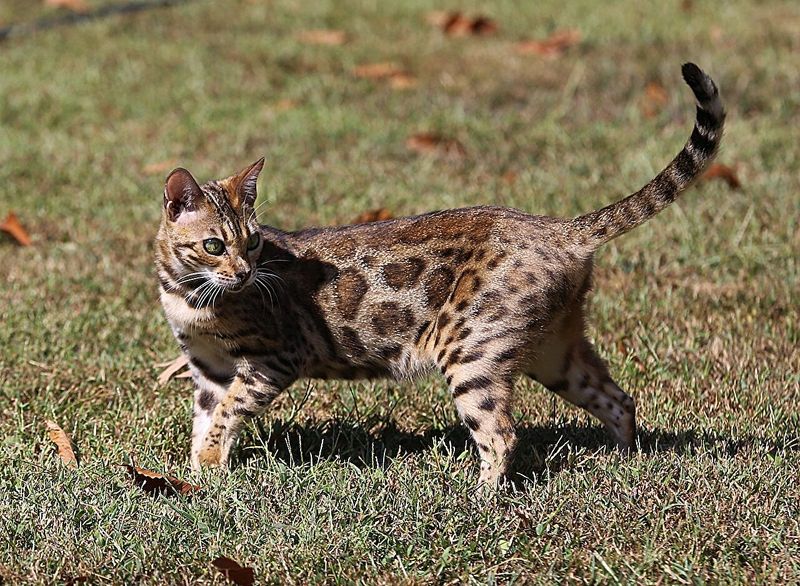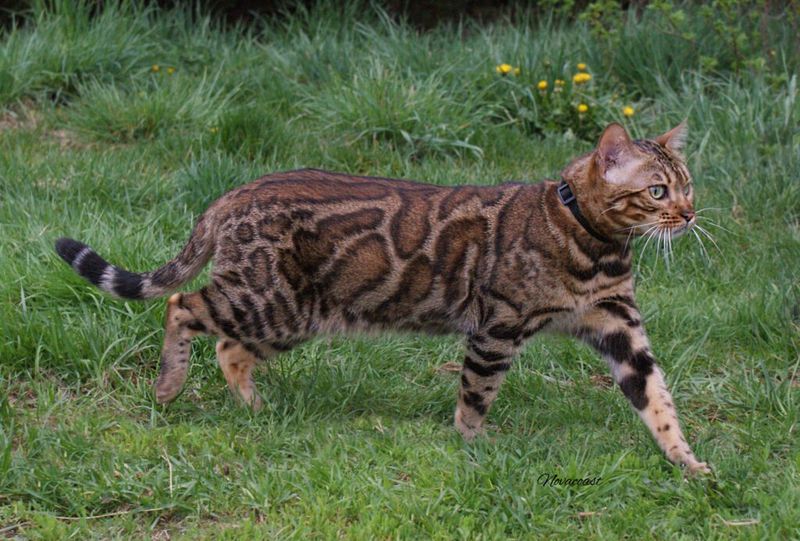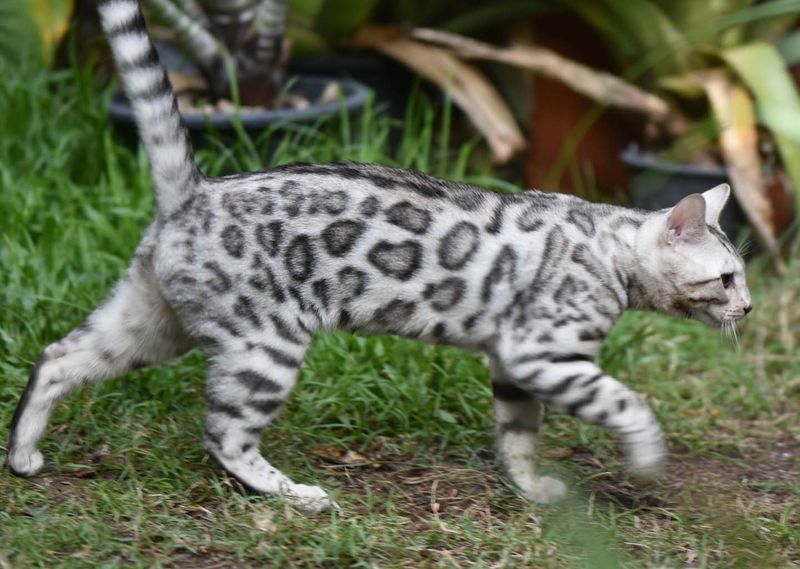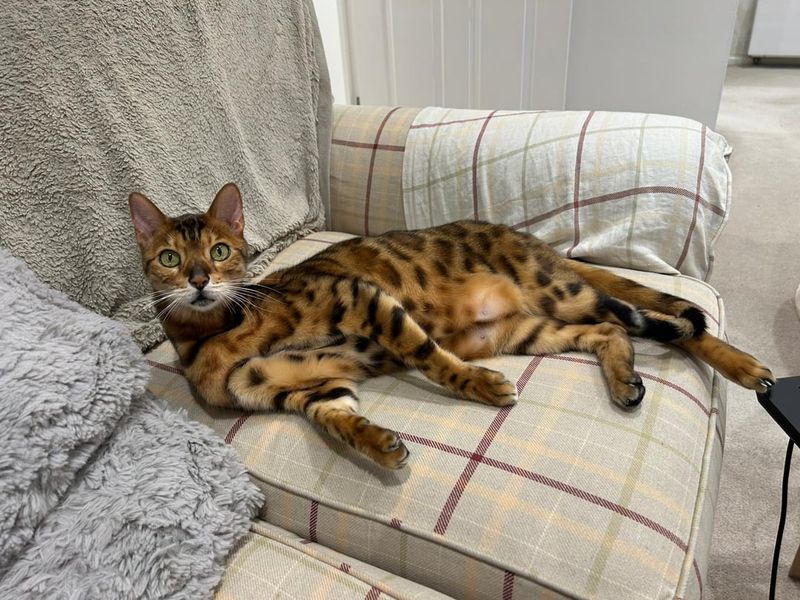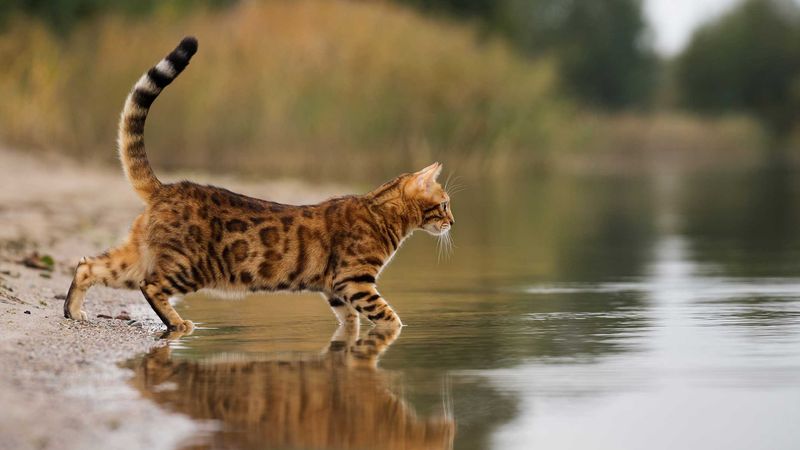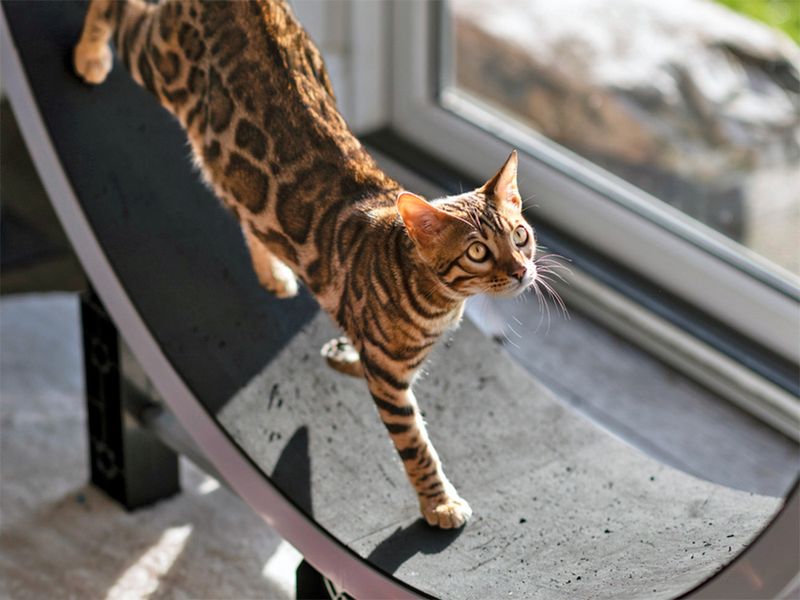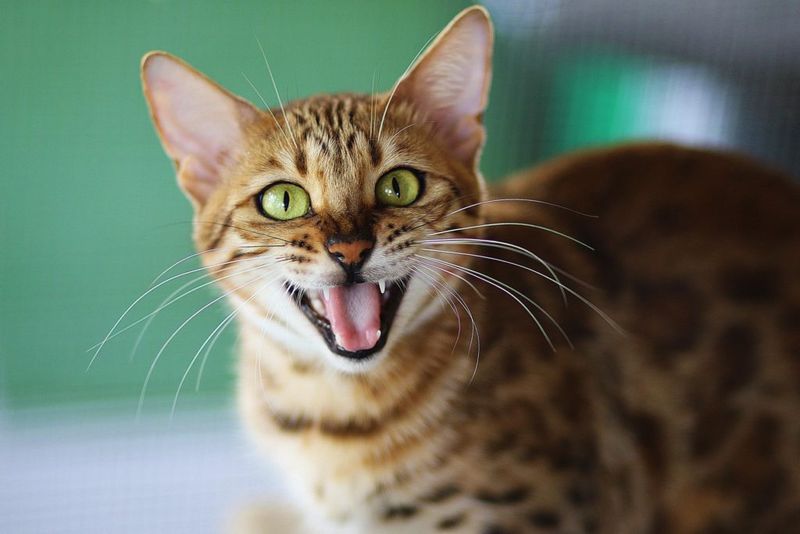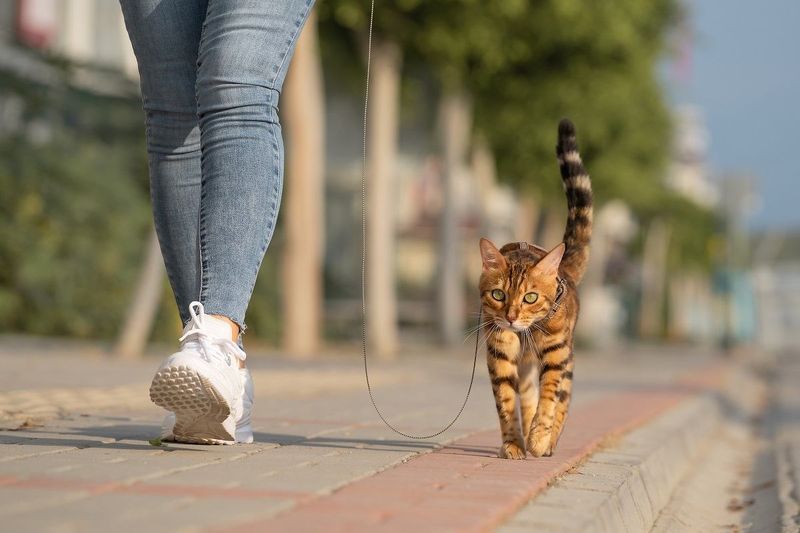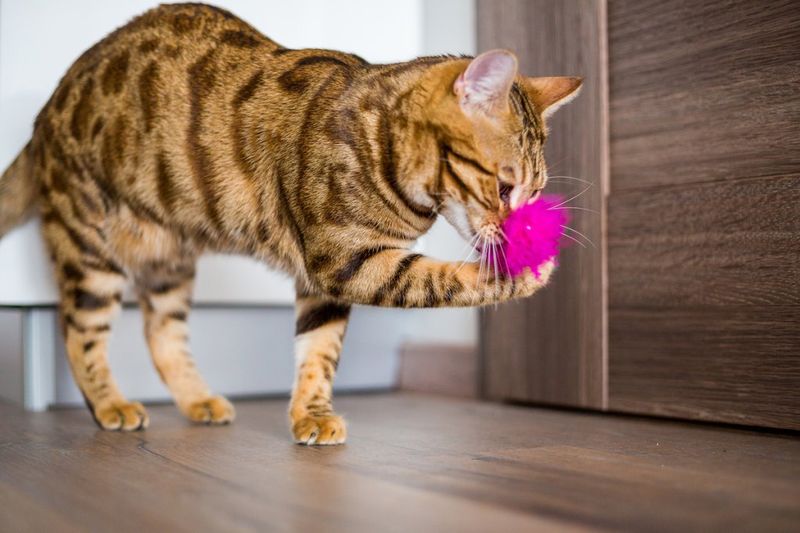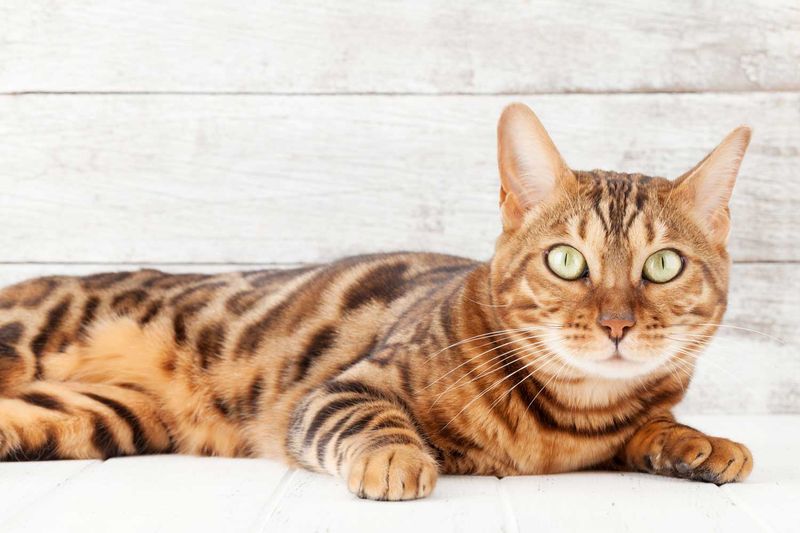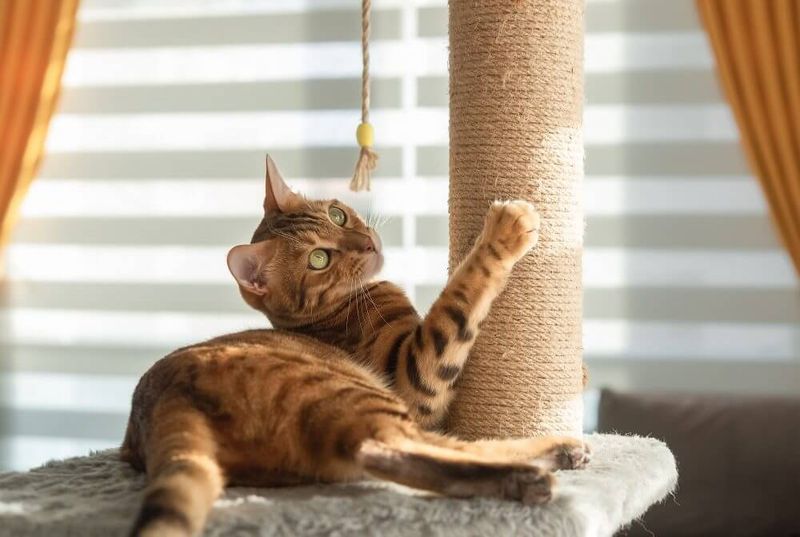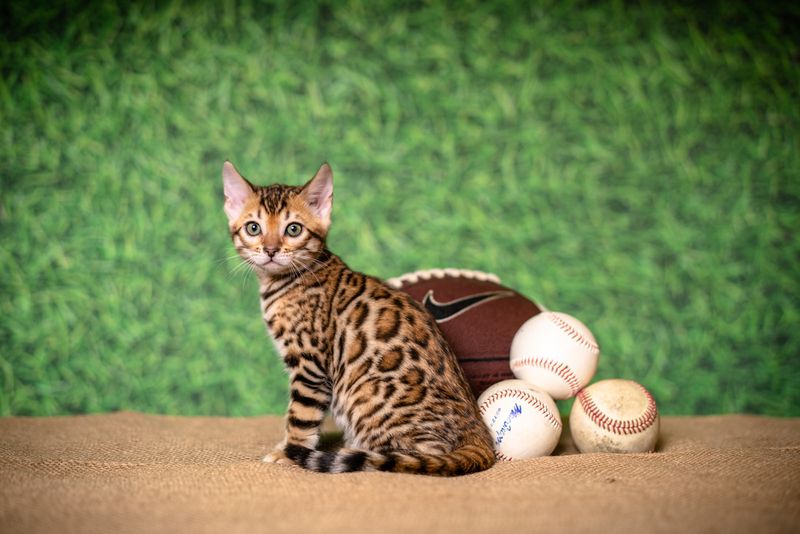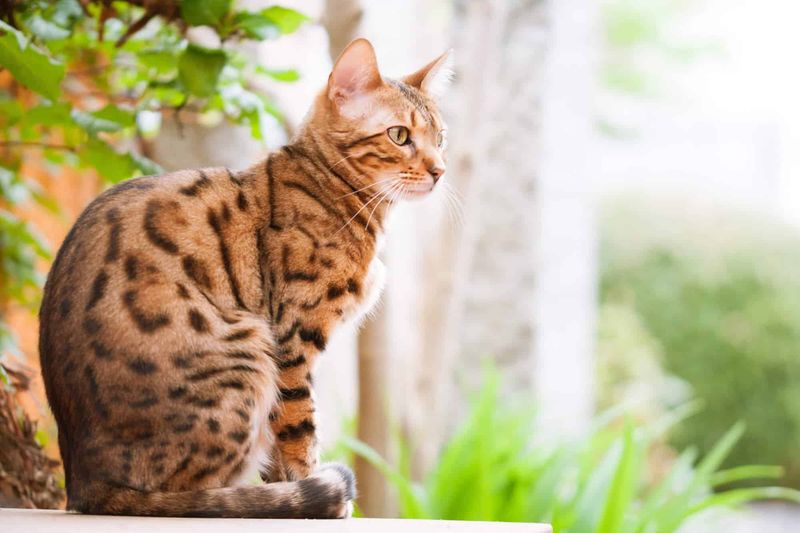📖 Table of Content:
Imagine a house cat with the grace of a leopard, the energy of a gymnast, and the sparkle of a jewel—this is the Bengal. Born from the crossing of domestic felines with the wild Asian leopard cat, the Bengal has inherited a unique combination of traits that set it far apart from traditional house pets. More than just eye-catching, this breed’s behavior, intelligence, and flair for adventure make it a marvel among cat lovers and animal enthusiasts alike.
Bengals don’t just look different—they behave in ways that often surprise even seasoned cat owners. Their personalities are bold and confident, often demanding as much stimulation and interaction as a dog might. They leap to great heights, dart through rooms with boundless energy, and can turn even the most mundane household objects into opportunities for play or exploration.
What makes them truly captivating is how they seamlessly bridge the divide between the domestic and the wild. Owning a Bengal is like inviting a miniature panther into your home, one with a mind of its own and a deep bond to those who understand it. These cats are not for the faint-hearted, but for those who crave a spirited and engaging companion, Bengals are an unforgettable choice.
1. Wild Ancestry
With genetic roots tracing back to the Asian leopard cat, Bengals carry a wild legacy in both their appearance and behavior. This lineage gives them a look that resembles jungle predators more than house pets. The Asian leopard cat is a small, tree-dwelling feline native to Asia, known for its nocturnal and solitary habits. When crossed with domestic cats, its traits influenced everything from the Bengal’s muscular build to its cautious yet curious demeanor. Their origin story isn’t just fascinating—it influences how Bengals interact with people and their environments even today. The wild heritage may explain their heightened instincts and aversion to excessive handling, which contrasts with more laid-back domestic breeds. Such a background ensures they bring a touch of the wilderness into every room they roam.
2. Exotic Coat Patterns
Nature has painted Bengals with some of the most mesmerizing coat patterns in the feline world. Their fur showcases spots, rosettes, or marble swirls, each design more dramatic than the last. These patterns are not only beautiful but functional in the wild, meant for camouflage in dense foliage. In the home, however, they become a conversation piece, admired for their depth and variety. No two Bengals share the same coat, making every individual cat a living work of art. It’s common for strangers and friends alike to be captivated by their appearance at first glance. This natural elegance adds an exotic aesthetic rarely seen in domesticated animals.
3. Glitter Effect
Shimmering fur is a hallmark feature that sets Bengals apart from nearly every other breed. This rare trait, referred to as the “glitter gene,” gives their coat a golden, iridescent sheen under light. The effect can make their already striking fur look like it’s been dusted with fine gold or pearl. It’s not a result of grooming products or lighting tricks—this is pure genetics at play. When a Bengal walks through a sunbeam, their sparkle catches the eye like living treasure. Breeders have selectively nurtured this trait over generations to enhance the breed’s appeal. The glitter effect isn’t just eye-catching; it reinforces the sense that Bengals are a breed apart from all others.
4. Athleticism
Not all cats are created equal when it comes to physical prowess—Bengals are in a league of their own. Their lean, muscular bodies are built for action, allowing them to jump several feet in the air with ease. Whether scaling bookcases, vaulting onto fridges, or performing mid-air twists, they embody feline agility at its peak. This strength and grace come from both their wild ancestry and a lifestyle that demands movement and challenge. Many Bengal owners find themselves “cat-proofing” high places just to keep their pets safe from their own athletic ambitions. Their muscles ripple with every leap, displaying a raw energy uncommon in more sedentary breeds. It’s this kinetic presence that makes sharing a space with them an ongoing spectacle.
5. Water Lovers
Contrary to popular belief, not all cats fear water—and Bengals often break that stereotype entirely. They have an unusual fascination with water and will often dip their paws into bowls, bathtubs, or even running faucets. This trait may be inherited from their wild ancestors, who frequently fished in streams and rivers. Owners have reported Bengals jumping into showers or watching toilet flushes with intense interest. While this can be charming, it also means keeping an eye on sinks and open toilets to avoid unexpected splashes. Some Bengals even enjoy swimming, a behavior almost unheard of among other domestic cats. Their water play is yet another quirk that endears them to adventurous pet lovers.
6. High Intelligence
Smart and observant, Bengals often behave more like problem-solving machines than passive pets. They quickly learn how to open doors, unlatch cages, and manipulate objects to get what they want. Their cognitive abilities demand enrichment—puzzle toys, interactive games, and human engagement. A bored Bengal can become destructive or mischievous, not out of malice but due to sheer intellectual restlessness. This high intelligence also allows them to pick up on routines and even understand basic commands. Some owners teach their Bengals tricks similar to those taught to dogs, including fetch or high-five. Mental stimulation is as crucial to their wellbeing as food and shelter.
7. Vocal and Communicative
Bengals are rarely silent, preferring instead to “talk” through an expressive range of vocalizations. From soft chirps and trills to loud meows and yowls, they are masters of feline conversation. These sounds serve various purposes—greetings, requests, complaints, or declarations of excitement. Some Bengals have even been noted to mimic the intonation of their owners’ voices. Their communication style makes it easy to develop a two-way relationship where owner and cat understand each other’s cues. Living with a Bengal often means accepting an ongoing dialogue, not just passive coexistence. For those who enjoy an interactive and vocal pet, the Bengal never disappoints.
8. Dog-Like Behavior
Surprising as it may seem, many Bengals display behavior more associated with dogs than cats. They often form close bonds with their humans, following them from room to room and demanding attention. Some love going for walks on leashes and even ride in cars with relative ease. Their social nature makes them excellent companions for those who want an involved, attentive pet. They tend to be loyal, affectionate, and even protective of their family. Unlike aloof breeds, Bengals will initiate play, sit by your side, and sometimes even try to sleep at your feet. Their dog-like tendencies make them ideal for people who enjoy constant company.
9. Endless Energy
Every moment is an opportunity for play or exploration when you’re a Bengal. These cats don’t just enjoy activity—they thrive on it. Idle moments can turn into impromptu zoomies across the house, or a spontaneous game of tag with an invisible opponent. Because of their boundless energy, Bengals are best suited to homes that can keep up with them. Interactive toys, vertical space, and regular play sessions are essential to keeping them happy and well-behaved. A sedentary lifestyle can lead to frustration, which may manifest in unwanted behaviors. Their stamina makes them ideal for active households that enjoy engaging pets.
10. Strong Hunting Instincts
Even in the coziest of homes, the Bengal’s inner predator is always awake. They stalk, pounce, and “kill” their toys with precision and intensity. This isn’t just play—it’s instinctual behavior rooted in their wild ancestry. Their sharp eyes and quick reflexes make them formidable mouse hunters, should the opportunity arise. Owners often witness their Bengal practicing stealthy approaches or midair catches with toys. This makes it essential to provide appropriate outlets for their hunting drive, like feather wands and motion-activated toys. Without stimulation, their natural instincts can become misdirected toward household objects or smaller pets.
11. Affectionate Yet Independent
Affection from a Bengal feels intentional and earned rather than obligatory. They’re not lap cats in the traditional sense, preferring selective cuddles on their own terms. Still, they often follow their favorite humans closely, showing loyalty through proximity and interaction. Their independence doesn’t equate to detachment—they simply have a strong sense of self. When they choose to snuggle, it’s a moment of trust and bonding. They appreciate affection but rarely tolerate being smothered or restrained. This balance between closeness and autonomy makes them suitable for people who respect a pet’s personal boundaries.
12. Curiosity Masters
If there’s something new in the room, a Bengal will be the first to inspect it. Their intense curiosity drives them to explore every cabinet, box, and crevice available. This constant need to investigate keeps them mentally sharp and always on the move. Owners often describe their homes being “Bengal-proofed” to prevent unwanted discoveries or breakage. Anything left open, from drawers to doors, becomes fair game for exploration. Their curiosity can be both charming and challenging, depending on the level of supervision. It’s part of what makes them such engaging and unpredictable companions.
13. Unpredictable Yet Loyal
Living with a Bengal means learning to expect the unexpected. Their personalities are diverse—some are bold and mischievous, while others are quiet observers with sudden bursts of energy. One constant, however, is their loyalty once they bond with a human. They remember faces, routines, and even preferences, forming a relationship deeper than many expect from a cat. Their unpredictability keeps life interesting, turning daily routines into dynamic interactions. While they may challenge your patience at times, their loyalty and affection make it worthwhile. With a Bengal, you’re not just getting a pet—you’re gaining a complex, devoted companion.
